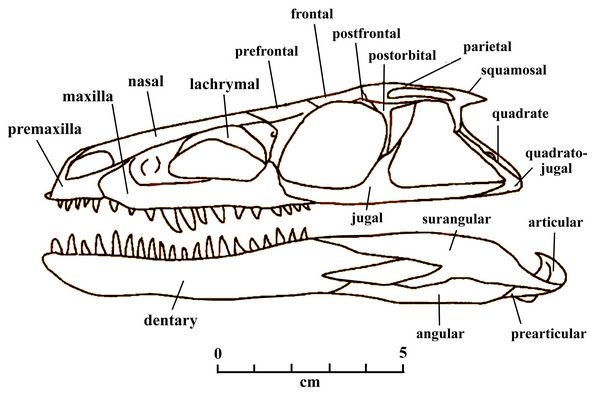Athena Review Image Archive ™
Yonghesuchus sangiensis skull

Skull of Yonghesuchus sangiensis (after Shao-Chun et al. 2001, fig.4).
Yonghesuchus sangiensis was a crocdilian-like diapsid reptile from the Upper Triassic period in China. It was discovered in 1992 in southwest Shanxi Province in the southeastern Ordos Basin, on the north side of Sangbi Creek, 1.5 km SW of Sangbi Township (Shao-Chen et al 2001). Geologic context is the early Tongchuran Formation. The genus name Yonghesuchus derives from Yonghe- for the find location, and -suchus, "crocodilian."
This represents the first record of a Late Triassic
tetrapod from China, and the uppermost stratigraphic record of a tetrapod in
the China Triassic. The holotype (IVPP V 12378 + 12379 at the Chinese Inst.
of Vertebrate Paleontology and Archaeology) includes two
incomplete skulls with seven neck vertebra and ribs in a sandstone
block. Y. sangiensis represents a new species of
archosaur with some similaties to Turfanosuchus. It is more derived
than the early Late Triassic archosaur
Proterochampsa.
Reference:
Shao-Chun, Wu, Liu Jun, and L.I. Jin-Ling 2001 Anatomy of the first Archosauriform (Diapsida) from the Terrestial Upper Triassic of China.Vertebrata Pal Asiatica vol 10, pp. 251-265.
Copyright © 1996-2020 Rust Family Foundation (All Rights Reserved).